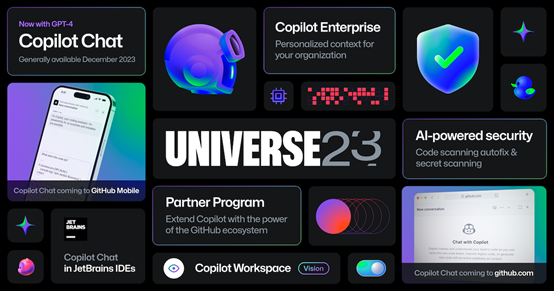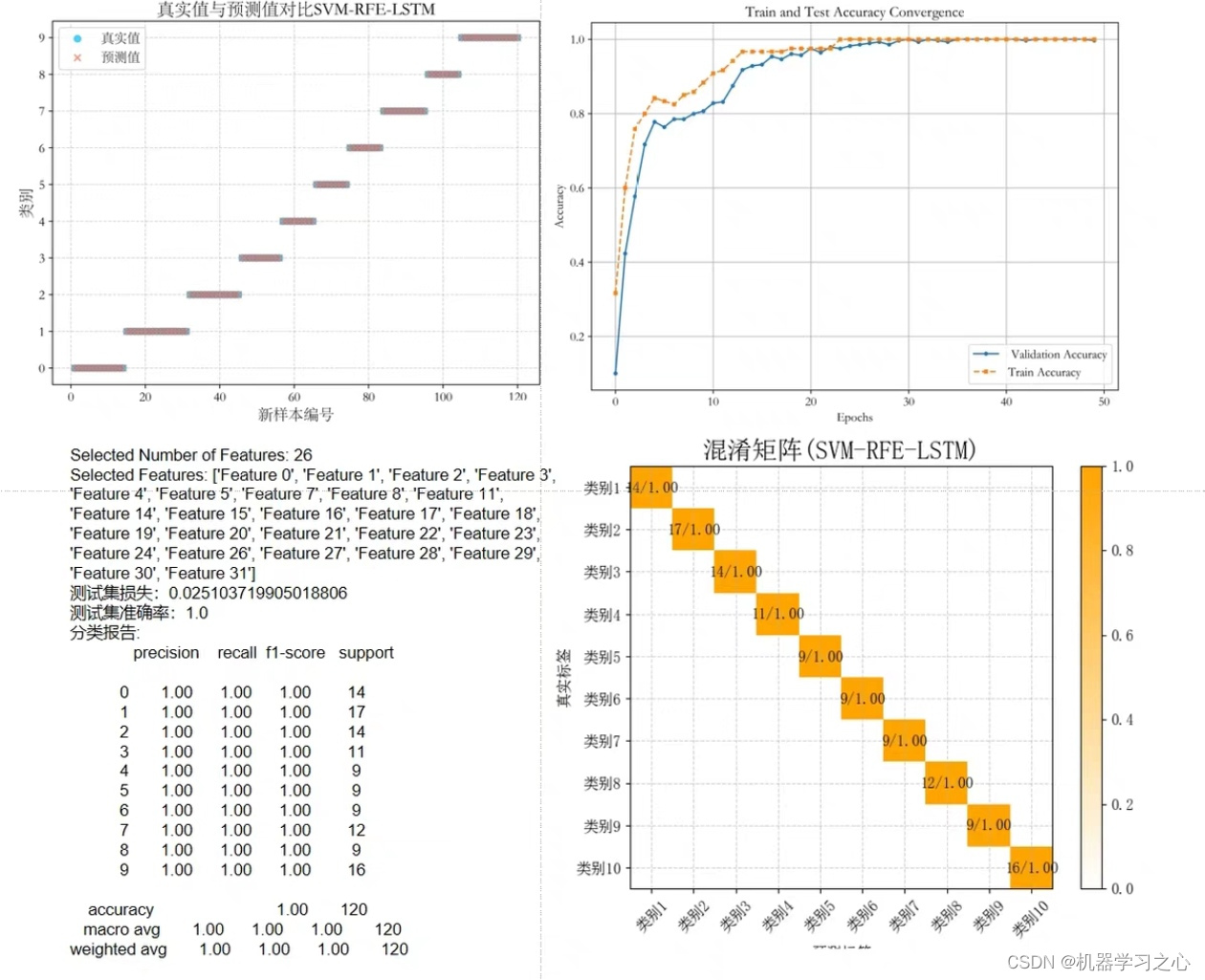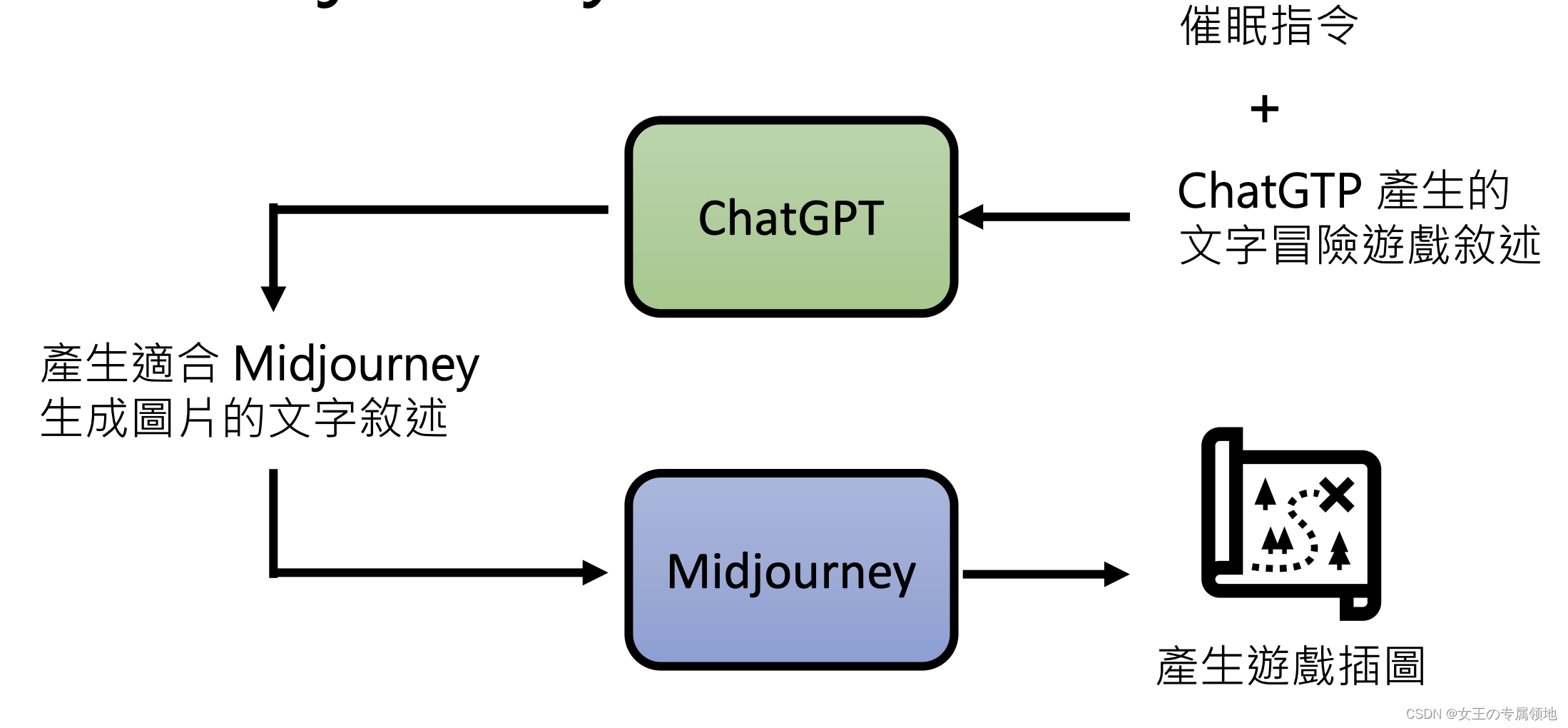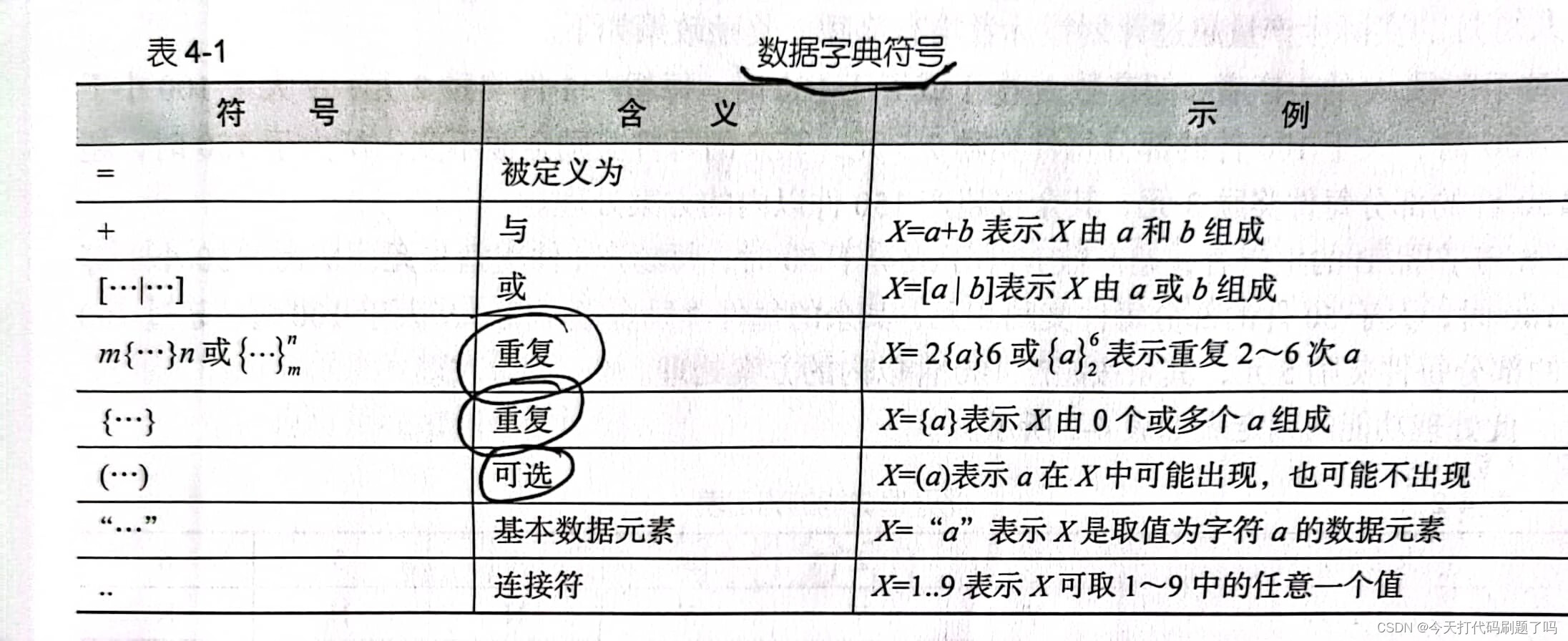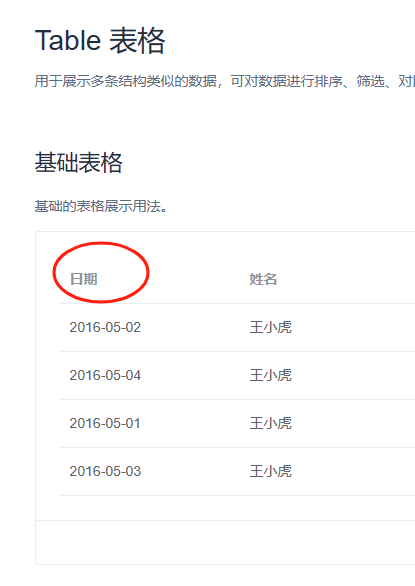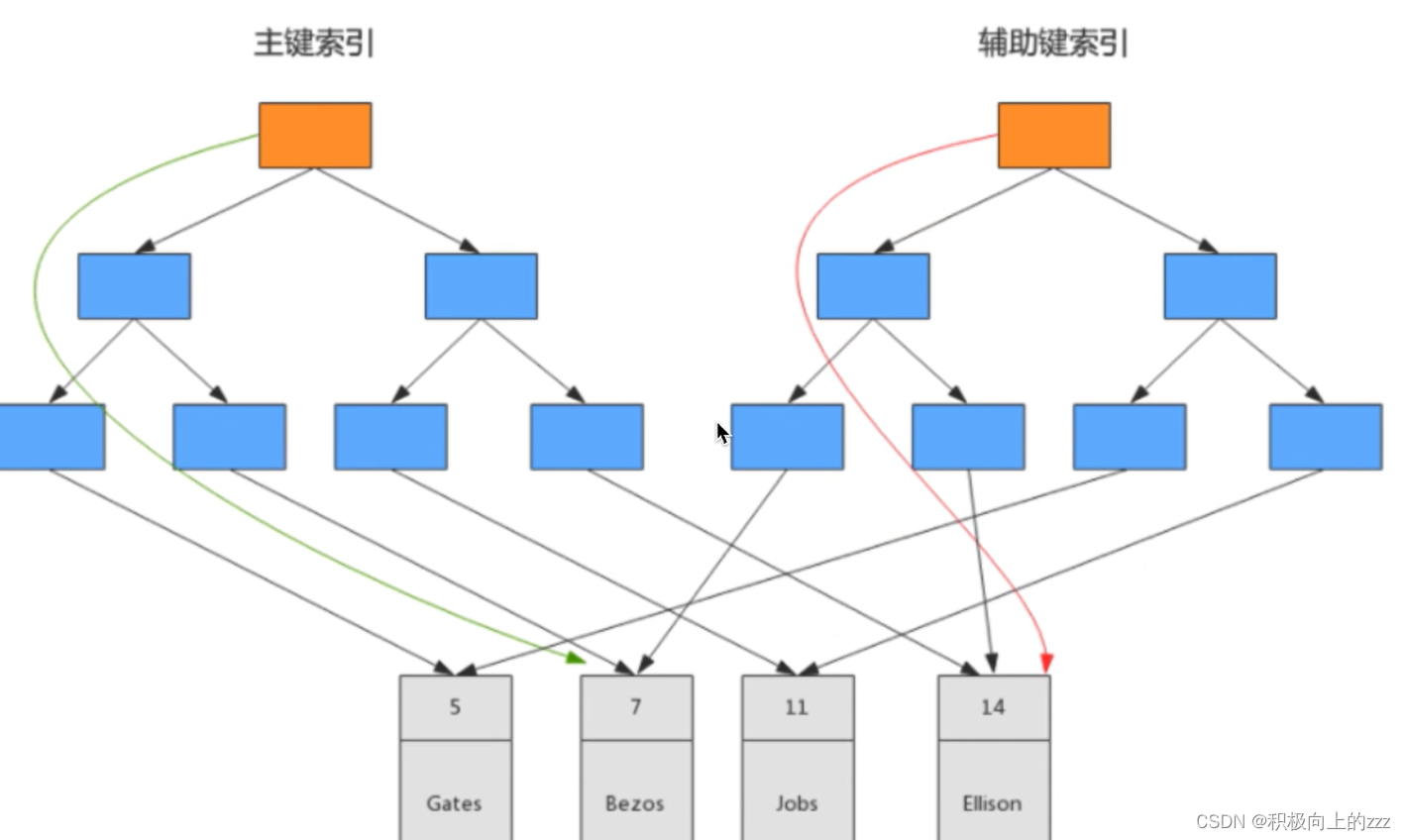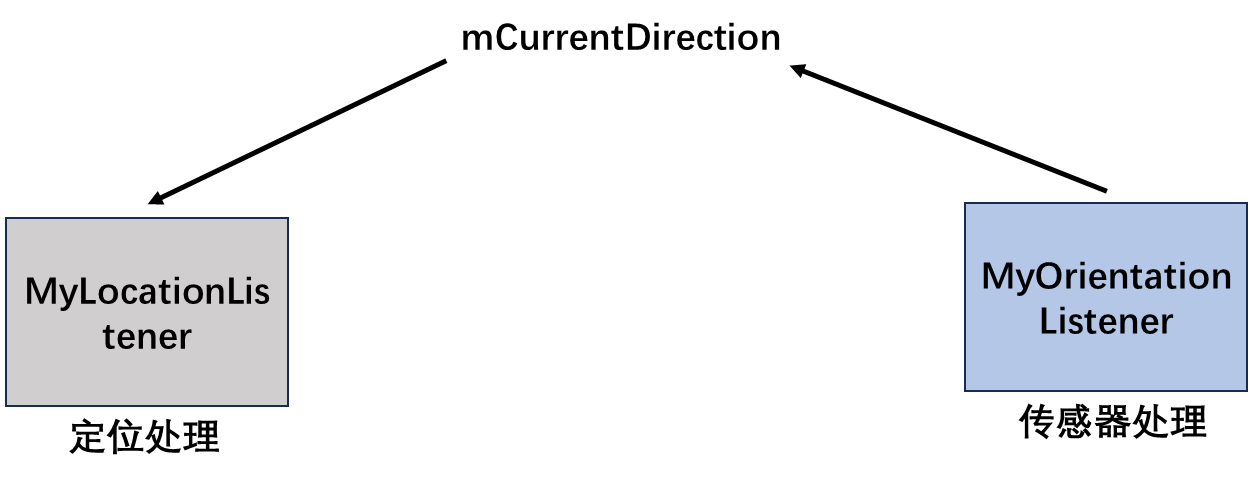目录
一、关于ASCⅡ及与字符互转
1.主要用到Encoding对象的GetBytes方法
2.Char显式转换为数值类型得到ASCⅡ
二、实例
三、生成效果
四、程序中的一些知识点
1.IsLetterOrDigit()
2.GetBytes()
3.TryParse(string, out int)
一、关于ASCⅡ及与字符互转
ASCⅡ(American Standard Code for Information Interchange,美国信息互换标准代码)是基于拉丁字母的编码系统,也是现今最通用的单字节编码系统。在程序设计中,可以方便地将字母转换为ASCⅡ码,也可以将ASCII码方便地转换为字母。
1.主要用到Encoding对象的GetBytes方法
Encoding对象的GetBytes方法接收一个字符串或字符数组作为参数,最后返回字节数组,可以根据字节数组得到字母的ASCⅡ码。
string P_str_temp ="abc";
Encoding P_encoding =Encoding.GetEncoding("unicode");
byte[]P_byte =P_encoding.GetBytes(P_str_temp);
string P_str=P_byte[0].ToString();使用Encoding类的GetEncoding静态方法得到Encoding对象,然后调用Encoding对象的GetBytes方法,该方法接收一个字符串或字符数组作为参数,最后GetBytes方法会返回字节数组对象,可以根据字节数组的第0个索引来得到字符串中第一个字母的ASCⅡ码。
2.Char显式转换为数值类型得到ASCⅡ
字符Char是值类型,它总是表示成16位Unicode代码值。
现在已经了解到Char是值类型,如果将Char显式转换为数值类型,可以方便地得到ASCⅡ码值。相反,如果将ASCⅡ码数值强制转换为Char,将会得到一个Char对象。
二、实例
// 字符与ASCII相互转换
using System.Text;
namespace _036
{
public partial class Form1 : Form
{
private GroupBox? groupBox1;
private Button? button2;
private Button? button1;
private TextBox? textBox1;
private TextBox? textBox2;
private TextBox? textBox3;
private TextBox? textBox4;
public Form1()
{
InitializeComponent();
Load += Form1_Load;
}
private void Form1_Load(object? sender, EventArgs e)
{
//
// button2
//
button2 = new Button
{
Location = new Point(117, 58),
Name = "button2",
Size = new Size(91, 23),
TabIndex = 6,
Text = "ASCII转字符",
UseVisualStyleBackColor = true
};
button2.Click += Button2_Click;
//
// button1
//
button1 = new Button
{
Location = new Point(117, 29),
Name = "button1",
Size = new Size(91, 23),
TabIndex = 5,
Text = "字符转ASCII",
UseVisualStyleBackColor = true
};
button1.Click += Button1_Click;
//
// textBox1
//
textBox1 = new TextBox
{
Location = new Point(6, 29),
Name = "textBox1",
Size = new Size(100, 23),
TabIndex = 1
};
//
// textBox2
//
textBox2 = new TextBox
{
Location = new Point(219, 29),
Name = "textBox2",
Size = new Size(100, 23),
TabIndex = 2
};
//
// textBox3
//
textBox3 = new TextBox
{
Location = new Point(6, 58),
Name = "textBox3",
Size = new Size(100, 23),
TabIndex = 3
};
//
// textBox4
//
textBox4 = new TextBox
{
Location = new Point(219, 58),
Name = "textBox4",
Size = new Size(100, 23),
TabIndex = 4
};
//
// groupBox1
//
groupBox1 = new GroupBox
{
Location = new Point(12, 14),
Name = "groupBox1",
Size = new Size(325, 100),
TabIndex = 0,
TabStop = false,
Text = "字符与ASCII相互转换"
};
groupBox1.Controls.Add(button2);
groupBox1.Controls.Add(button1);
groupBox1.Controls.Add(textBox1);
groupBox1.Controls.Add(textBox2);
groupBox1.Controls.Add(textBox3);
groupBox1.Controls.Add(textBox4);
groupBox1.SuspendLayout();
//
// Form1
//
AutoScaleDimensions = new SizeF(7F, 17F);
AutoScaleMode = AutoScaleMode.Font;
ClientSize = new Size(349, 126);
Controls.Add(groupBox1);
Name = "Form1";
StartPosition = FormStartPosition.CenterScreen;
Text = "字符与ASCII互转";
groupBox1.ResumeLayout(false);
groupBox1.PerformLayout();
}
/// <summary>
/// 字母转ASCII
/// 注释掉的部分异常:
/// Index was outside of the bounds of the array
/// 未处理的异常:System.IndexOutOfRangeException:索引超出数组的范围(在第一个if语句处)
/// 修改后,正常了
/// </summary>
private void Button1_Click(object? sender, EventArgs e)
{
if (textBox1!.Text != string.Empty) //判断输入是否为空
{
/*if (Encoding.GetEncoding("unicode"). //判断输入是否为字符
GetBytes(new char[] { textBox2!.Text[0] })[1] == 0) */
if (char.IsLetterOrDigit(textBox1.Text.ToCharArray()[0])) //判断输入是否为字符
{
textBox2!.Text = Encoding.GetEncoding( //字符转ASCII码
"unicode").GetBytes(textBox1.Text)[0].ToString();
}
else
{
textBox2!.Text = string.Empty; //输出空字符串
MessageBox.Show("请输入字母!", "提示!");//提示用户信息
}
}
else
{
MessageBox.Show("请输入字母!", "提示!");
}
}
/// <summary>
/// ASCII转字母
/// </summary>
private void Button2_Click(object? sender, EventArgs e)
{
if (textBox3!.Text != string.Empty) //判断输入是否为空
{
if (int.TryParse( //将输入的字符转换为数字
textBox3.Text, out int P_int_Num))
{
textBox4!.Text =
((char)P_int_Num).ToString(); //ASCII码转为字符
}
else
{
MessageBox.Show( //如果输入不符合要求弹出提示框
"请输入正确ASCII码值。", "错误!");
}
}
else
{
MessageBox.Show("请输入ASCII!", "提示!");
}
}
}
}
三、生成效果


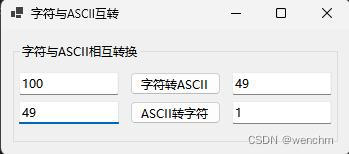
四、程序中的一些知识点
1.IsLetterOrDigit()
详见本文作者的其他文章,C#的Char 结构的方法之IsLetterOrDigit()-CSDN博客 https://blog.csdn.net/wenchm/article/details/135355315?spm=1001.2014.3001.5501
2.GetBytes()
详见本文作者的其他文章,C#中汉字转区位码-CSDN博客 https://wenchm.blog.csdn.net/article/details/135350559?spm=1001.2014.3001.5502
3.TryParse(string, out int)
详见本文作者的其他文章,TryParse(String, Int32)方法-CSDN博客 https://wenchm.blog.csdn.net/article/details/135255649?spm=1001.2014.3001.5502



